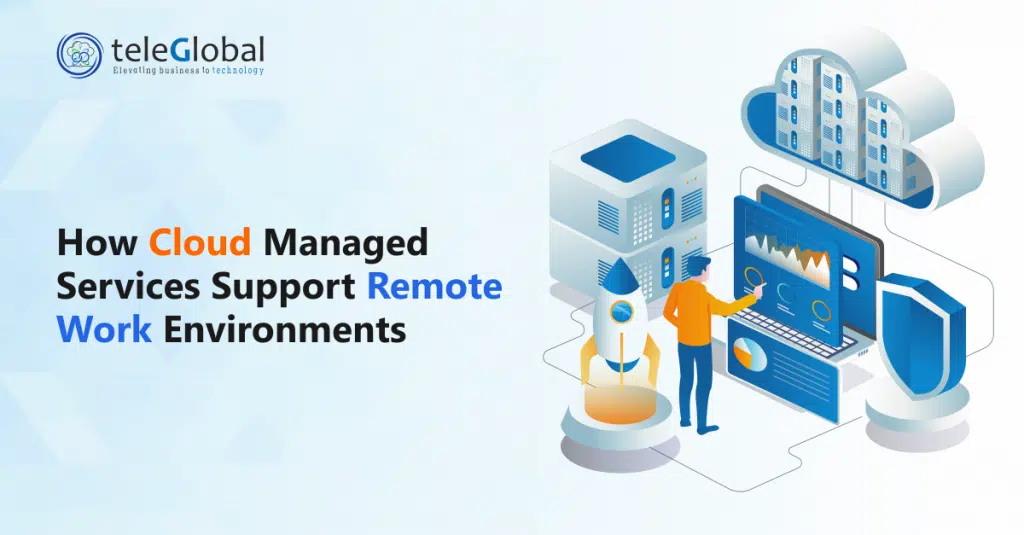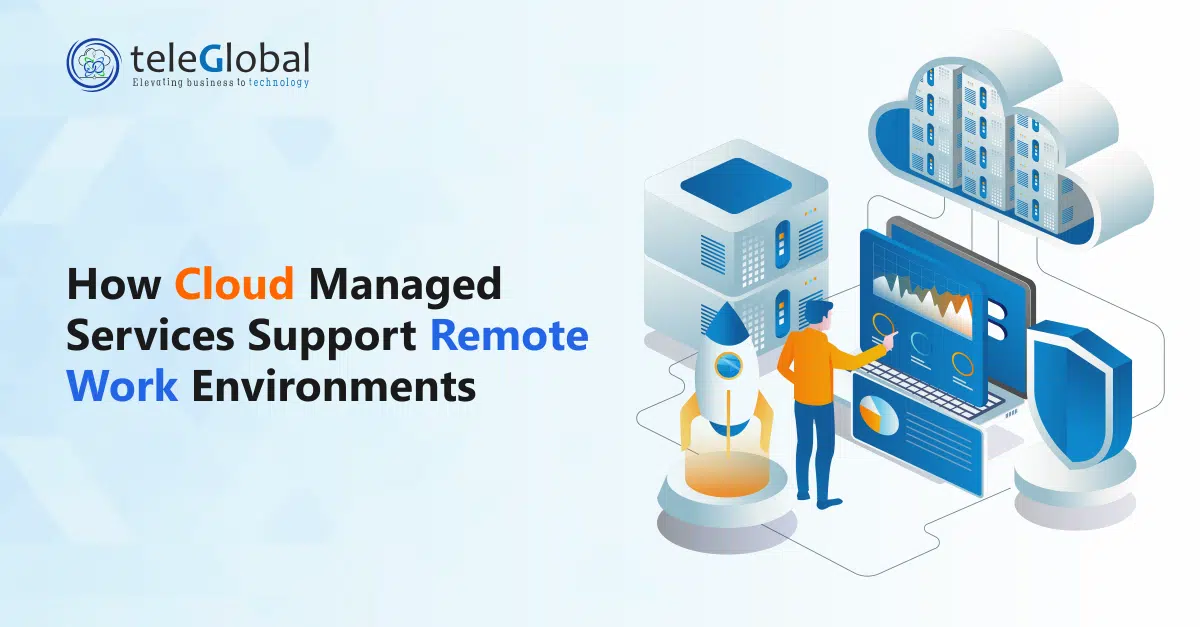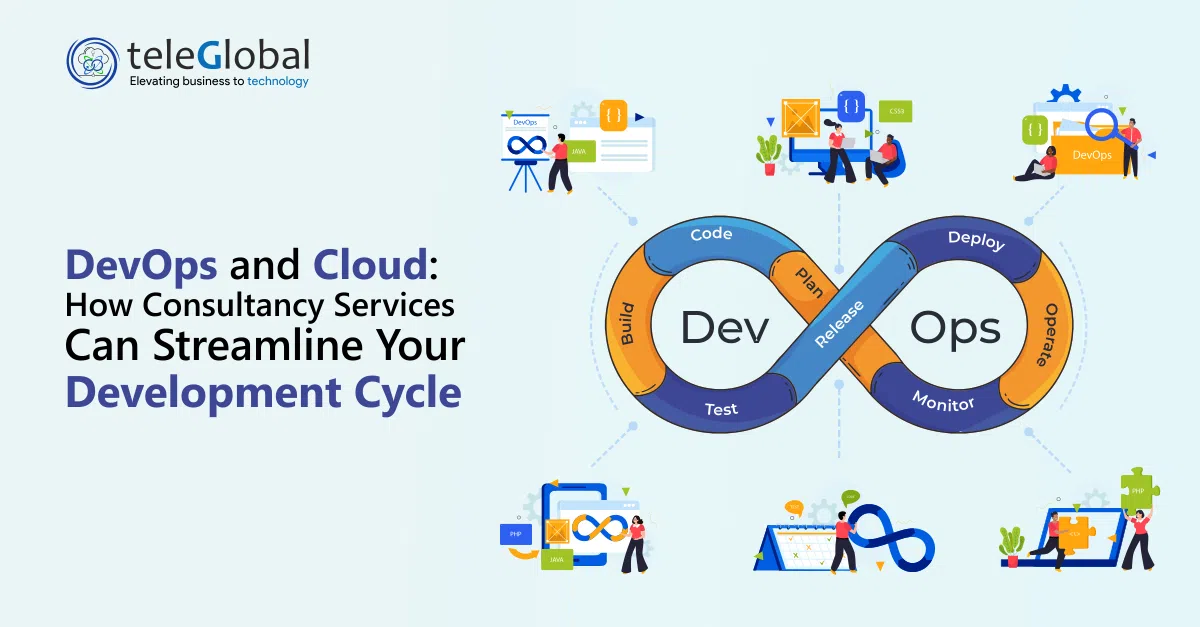
The shift to remote work has transformed the way businesses operate, prompting a re-evaluation of tools and strategies. In this dynamic landscape, cloud managed services have emerged as a cornerstone for supporting remote work environments. These services not only facilitate seamless operations but also enhance collaboration, security, and flexibility. Let’s explore how cloud managed services are uniquely positioned to empower remote teams and drive organizational success.
1. A New Era of Collaboration
Beyond Traditional Communication
In remote work, traditional communication methods often fall short. Cloud managed services introduce advanced collaboration tools that transcend geographical barriers. Platforms such as Microsoft Teams, Slack, and Zoom are designed for modern teams, offering features like:
Integrated Workspaces: Many of these tools combine chat, video conferencing, and file sharing in one platform, making it easier for teams to stay connected and engaged.
Real-Time Collaboration: Tools like Google Workspace allow multiple users to edit documents simultaneously, fostering teamwork and creativity.
This shift not only improves productivity but also nurtures a sense of belonging, critical for remote teams.
2. Unmatched Scalability and Flexibility
Adapting to Change
One of the standout features of cloud managed services is their ability to scale resources dynamically. In a remote work setting, businesses face varying demands—whether due to project changes, seasonal peaks, or growth. Cloud services provide:
On-Demand Resource Allocation: Companies can easily scale up or down based on immediate needs, ensuring they only pay for what they use.
Quick Onboarding: New employees can be onboarded rapidly with access to the necessary tools and resources without lengthy setup processes.
This adaptability not only saves costs but also enables organizations to remain agile in an ever-changing environment.
3. Robust Security Protocols
Protecting Remote Workforces
With remote work comes increased vulnerability to cyber threats. Cloud managed services are designed with security as a priority, incorporating features such as:
Comprehensive Threat Monitoring: Many cloud providers use AI-driven analytics to detect and respond to threats in real time, significantly reducing the risk of breaches.
Multi-Factor Authentication (MFA): By requiring multiple forms of verification, organizations can add an extra layer of security to sensitive data access.
These proactive measures help businesses safeguard their information and maintain compliance with industry regulations.
4. Centralized IT Management
Simplifying Complex Operations
Managing IT infrastructure remotely can be challenging. Cloud managed services streamline this process, offering centralized management that includes:
Automated System Updates: Keeping software up to date is crucial for security and performance. Cloud services handle this automatically, reducing the burden on IT teams.
24/7 Technical Support: With round-the-clock support, employees can resolve issues quickly, minimizing disruptions and keeping productivity high.
This centralization allows organizations to focus more on strategic initiatives rather than day-to-day IT maintenance.
5. Enhanced Employee Experience
Fostering Engagement and Well-Being
Cloud managed services contribute significantly to the employee experience, which is vital in a remote setting. Key elements include:
Flexible Work Arrangements: Employees can access tools and data from any location, allowing them to choose where and how they work best. This flexibility promotes a healthier work-life balance.
Opportunities for Learning and Growth: Many cloud services come with integrated training and development tools, enabling employees to upskill and adapt to changing job requirements.
By prioritizing employee well-being and development, organizations can foster a more engaged and motivated workforce.
6. Driving Innovation
Empowering Creativity and Experimentation
The cloud’s inherent flexibility not only supports daily operations but also encourages innovation. With access to cutting-edge tools and resources, remote teams can:
Prototype and Test Ideas: Rapid access to cloud resources allows teams to experiment with new solutions without the constraints of traditional infrastructure.
Cross-Department Collaboration: Cloud services facilitate collaboration between different teams and departments, fostering diverse perspectives and innovative solutions.
This culture of innovation can lead to enhanced products and services, giving businesses a competitive edge.
Conclusion
In the ever-evolving landscape of remote work, cloud managed services stand out as a vital solution that empowers organizations to thrive. By enhancing collaboration, providing scalability, ensuring robust security, simplifying IT management, improving employee experiences, and fostering innovation, these services play a pivotal role in modern business operations. As companies continue to navigate the complexities of remote work, leveraging cloud managed services will not only support their immediate needs but also lay the groundwork for long-term success. Embracing this cloud-driven approach can transform challenges into opportunities, setting the stage for a resilient and agile workforce.









































